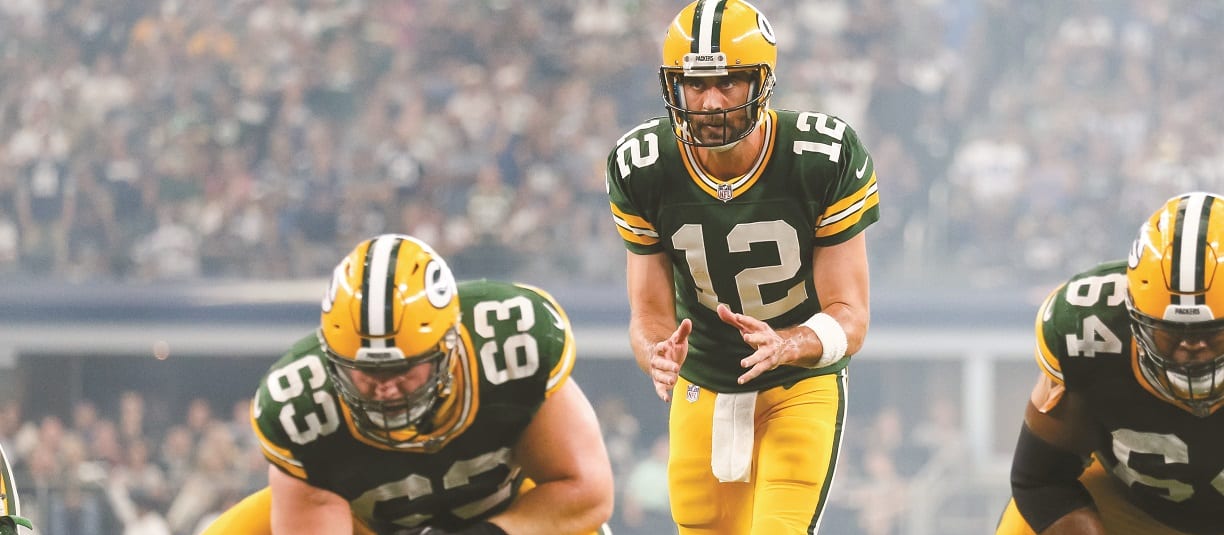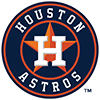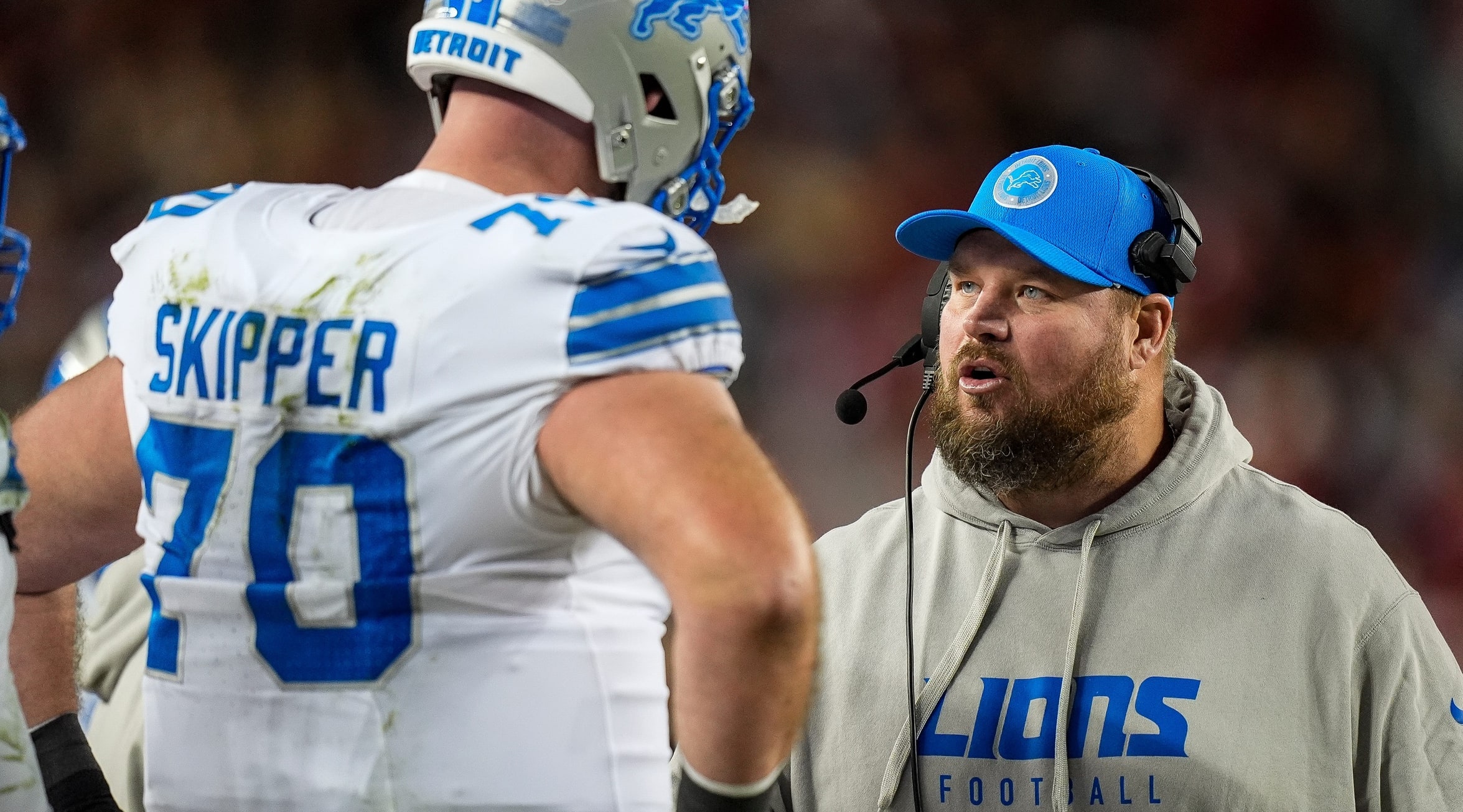THE injury story of Week 1 was in Green Bay where it appeared the former MVP had suffered a catastrophic knee injury. The injury occurred early in the second quarter when he was taken down by Bears defensive end Roy Robertson-Harris. The 294-pound defensive end fell onto the outside of Rodger's left knee, generating a force that likely stressed the inside aspect of the knee. This type of force is known as a valgus force and is a common mechanism of injury for a medial collateral ligament (MCL) sprain. Rodgers was able to return to the game in the second half but was wearing a brace under his pants as he led the Packers on a comeback for the ages. Based on images, it appears he was sporting a simple hinge brace that would help stabilize the aforementioned area.
There has been no confirmation from the Packers regarding the exact injury Rodgers sustained. However, given how the injury occurred and Rodgers' limited mobility during the game, a sprained MCL seems likely.
The MCL, along with the lateral collateral ligament (LCL) and cruciate ligaments (ACL and PCL), stabilizes the knee joint. The MCL sits on the inside portion of the knee and is specifically responsible for supporting the joint during lateral or side-to-side movements. The MCL can be sprained in varying degrees of severity. A Grade I sprain means the associated damage was minimal and the overall integrity of the ligament remains intact. A Grade II sprain is
THE injury story of Week 1 was in Green Bay where it appeared the former MVP had suffered a catastrophic knee injury. The injury occurred early in the second quarter when he was taken down by Bears defensive end Roy Robertson-Harris. The 294-pound defensive end fell onto the outside of Rodger's left knee, generating a force that likely stressed the inside aspect of the knee. This type of force is known as a valgus force and is a common mechanism of injury for a medial collateral ligament (MCL) sprain. Rodgers was able to return to the game in the second half but was wearing a brace under his pants as he led the Packers on a comeback for the ages. Based on images, it appears he was sporting a simple hinge brace that would help stabilize the aforementioned area.
There has been no confirmation from the Packers regarding the exact injury Rodgers sustained. However, given how the injury occurred and Rodgers' limited mobility during the game, a sprained MCL seems likely.
The MCL, along with the lateral collateral ligament (LCL) and cruciate ligaments (ACL and PCL), stabilizes the knee joint. The MCL sits on the inside portion of the knee and is specifically responsible for supporting the joint during lateral or side-to-side movements. The MCL can be sprained in varying degrees of severity. A Grade I sprain means the associated damage was minimal and the overall integrity of the ligament remains intact. A Grade II sprain is a more moderate injury and involves damage to the individual ligament fibers. As a result, a Grade II sprain is often referred to as a partial or incomplete tear. Fortunately, mild to moderate MCL sprains can heal without surgical intervention, especially if the medial meniscus remains uninvolved.
The Packers continue to evaluate the injury to insure the integrity of the knee remains uncompromised. This is particularly important considering Rodger has two previous surgeries on the area, an ACL repair in college and an arthroscopic scope in 2015. Because the team is still collecting information, look for Rodgers' status to remain unclear for the immediate future. It wouldn't be surprising if this ended up as a true game-time decision for Week 2.
If Rodgers is capable of playing, look for Green Bay to modify its game plan to better suit their quarterback's limitation. He will likely take a majority of his sets out of the shotgun to make up for his lack of mobility and will rely on a quick release of the football. While I would normally downgrade any quarterback with this type of injury, Rodgers has proven he can still be effective even when injured. Those invested in the former MVP will gladly take him in any capacity after initially fearing he may have been lost for an extended period of time.
The Panthers tight end re-injured his right foot and has been ruled out indefinitely. Olsen fractured his right fifth metatarsal in the team's win over the Cowboys, the same injury that sidelined him for a majority of the 2017 season. The fifth metatarsal sits on the outside aspect of the foot, bridging the tarsal bones of the foot and the bones of the toes. The location of Olsen's fracture will be key in determining his recovery, as particular areas of the metatarsal have a poor supply of blood. He's currently not considering surgery, though Carolina plans to evaluate his status on a month-to-month basis. Hardware failures or re-injury is relatively common in fifth metatarsal fractures, and a secondary surgery wouldn't be shocking. Unfortunately, he becomes a high-risk fantasy play for the remainder of the season, especially in leagues without an IR. Rookie Ian Thomas is expected to move up the depth chart for the Panthers.
Turf Burns
Doug Baldwin: The Seahawks receiver wasn't quite as lucky with his knee injury. An MRI on the area revealed a Grade II MCL sprain that is expected to sideline him for multiple weeks. Seattle has not put a definitive timeline on his recovery, though his previous medical history complicates the situation. Baldwin missed the preseason with issues in the opposite knee. A three- to four-week absence seems likely, opening the door for Tyler Lockett and Brandon Marshall to see extra reps over the next few games.
Leonard Fournette: Fournette left fantasy owners wanting more in Week 1 after he made a premature exit following a hamstring injury. The team is optimistic that he will be available against the Patriots, but it could be in their best interest to let him sit until he's fully healed. Hamstring injuries tend to linger and can easily be aggravated. This is particularly true in players with a history of lower leg injuries like Fournette. The second-year back is considered day-to-day for now but will be a precarious play even if he is cleared to take the field.
Jeremy Hill: Hill will miss the remainder of the season after tearing his ACL in New England's win over the Texans. The injury will have a big impact on the Patriots crowded backfield with Rex Burkhead and Sony Michel now expected to assume bigger workloads.
Marcus Mariota: Tennessee's quarterback was unable to finish the Titans' loss to the Dolphins. Mariota was struck on the elbow after completing a hand off and later reported losing feeling in his right hand and fingers. The video and Mariota's comments are consistent with an ulnar nerve injury, meaning it's likely he was hit in his "funny bone." The funny bone isn't a bone at all but actually the nerve that travels behind the elbow and delivers sensory and motor messages to the forearm, wrist and hand. Hopefully the quarterback suffered a mild nerve contusion and will be okay to play in Week 2. However, keep a close eye on his throwing accuracy to get a better idea if the associated symptoms have resolved.
Delanie Walker: The Titans tight end has been lost for the season after suffering a dislocated and fractured ankle. The team also reported there was significant ligament damage and surgery will be required. Walker's injury is comparable to the ankle injury sustained by New York's Odell Beckham last season. The long-term concerns will center around the ligament injury and not the bone injury due to the varying recovery rates of each tissue type. Walker should be in line to return for training camp in the summer of 2019.
Will Fuller: The Texans offense struggled with Fuller in street clothes, though the team is hopeful he will back in uniform against the Titans. Fuller is nursing a hamstring injury sustained late in the preseason. He has been seen on the practice field, so there have been encouraging signs. Like Fournette, Fuller will be a risky play upon his return, especially considering his dependence on speed.
Carson Wentz: Wentz continues to progress in his recovery, though the Eagles remain noncommittal on a return date. They won't rule out a Week 2 return though it seems more likely he makes his debut in Week 3 against the Colts. Remain patient here as Philadelphia continues to play the long game with the health of their franchise signal caller.


























